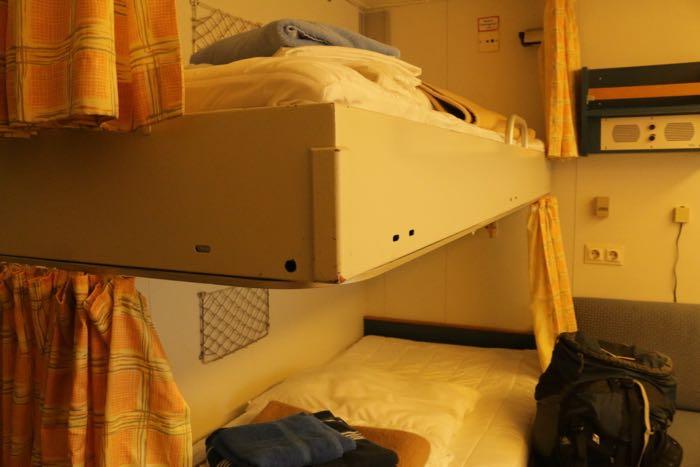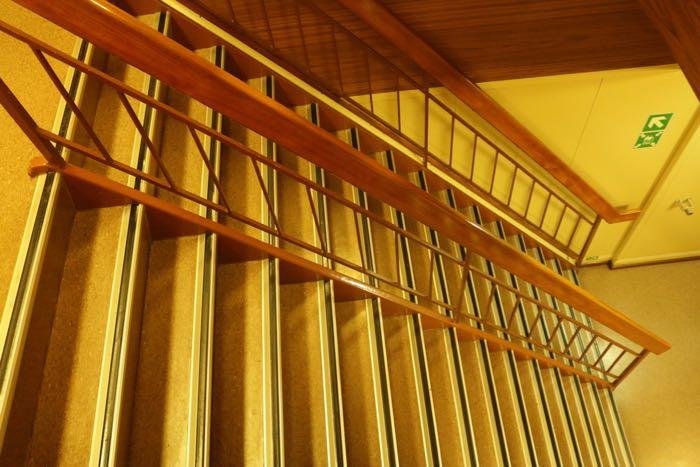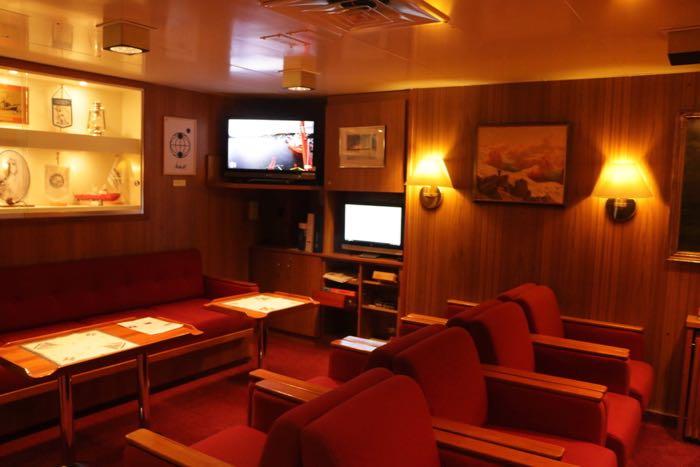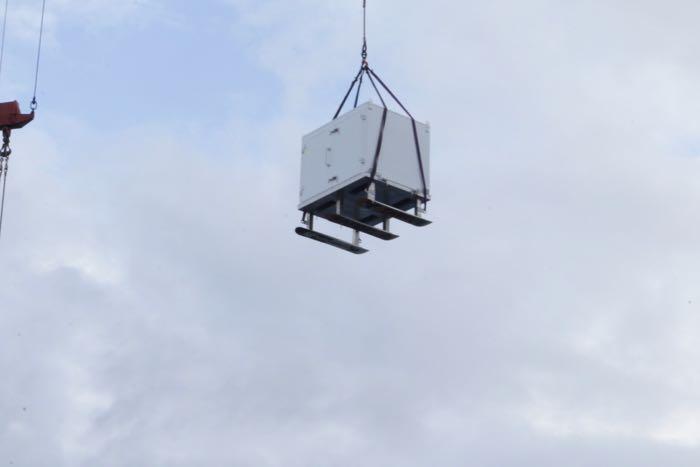Will There Be Pizza?
This post is inspired by Rhys & Leo in Homer, Alaska. They asked how MOSAiC was going to get food for a year on the icebreaker and if we'll have pizza. Here on the Fedorov we haven't had pizza yet. I'll be sure to let you know if we do. Potatoes, rice, cabbage, radishes, fish, and meat are often on the menu. There is soup at almost every lunch and dinner, and it is delicious. Borscht (beet soup), lentil soup, vegetable soup, cream of broccoli soup, potato soup, fish soup... all sorts of soup! We have also had quite a bit of spaghetti, and yesterday's tea time was tea, fruit, toast, and chocolate bars. Otherwise tea time is often some sort of pancakes or delicious baked goods.
Planning to have enough food to keep a large crew well-fed for a year must be hard. Throughout the year, icebreakers will bring new scientists, food, and equipment out to the Polarstern. But a lot of the food is already onboard. This [interview with the baker on the Polarstern](https://m.
) gives you an idea what it is like to plan and bake for a research expedition in the Arctic.
 These are the bunkbeds aboard the Polarstern. Our set up on the Fedorov is very similar.
These are the bunkbeds aboard the Polarstern. Our set up on the Fedorov is very similar.
You might be wondering what our daily life looks like beyond our meals. Each day, Chief Mate Gregory comes over the loudspeaker at 7 am and announces the date and day of the week. Then he says, "Expedition participants: wake up." If we aren't already up, we pile out of our bunks and prepare for breakfast.
Some people have tasks they are working on to prepare for setting the equipment up on the ice. Others are involved in helicopter flights or snowmachine trips onto the ice to survey it. A select few are involved in major discussions about choosing the ice floe. Educators, journalists and students are gathering information, taking photos, and conducting interviews. However, most of us still have quite a lot of free time right now.
So what do we do? One of the researchers is leading morning yoga classes. There aren't any big spaces to use for exercice and only a couple people actually brought yoga mats onboard. But we cram into the classroom space and use towels or blankets on the floor. Legs and arms bump into each other as we stretch out through the poses. If someone loses their balance, it is like a row of dominoes! There is lots of laughter.
A student is also leading a crossfit club. They meet outside on the back deck and go through an exercise routine each morning. Hats and gloves required! Others are playing lots of ping pong, since that is basically the only thing set up in the 'exercise room.'
 These icebreakers have many flights of stairs. There are 7 main floors on the Fedorov, and I sometimes climb them all 5-10 times for exercise.
These icebreakers have many flights of stairs. There are 7 main floors on the Fedorov, and I sometimes climb them all 5-10 times for exercise.
There are seven flights of stairs to climb, so I have started doing sets of stairs for exercise. We aren't allowed to run on board, but I do it as quickly as I can without running. And I walk around on deck a lot. Sometimes I go slowly and take my camera or just appreciate the sights. This morning was the first time it has been clear enough to see a sunrise. It was beautiful! Other times, I go a little faster and walk laps on each deck -- a 'hike' in the Arctic.
Inside, people spend a lot of time working with their laptops. Many are writing scientific articles about their other research efforts. The down time on Fedorov is like a retreat, allowing them the concentrated time they need to focus on finishing these papers. Journalists are busy transcribing interviews, writing articles, sorting photos, or editing radio pieces. I use this time to write my PolarTREC journals and to create or adapt relevant activities for young learners. And people nap. We are all still catching up from shifting 5 time zones in 7 days.
 The red salon on the Polarstern is a bit fancier than the 'social room' on the Fedorov, but we make good use of the space we do have here.
The red salon on the Polarstern is a bit fancier than the 'social room' on the Fedorov, but we make good use of the space we do have here.
In the evenings, we play lots of card games and board games. There are many varieties, but a popular group game is called SNERTS or NERTS. It is a sort of competitive, group solitaire. There is also a 'cinema club,' where people share movies they brought with them.
Soon, we will be very busy. Once the floe is chosen, we will be setting up thousands of pounds of equipment and buoys on and around the ice. Some equipment will measure things in the atmosphere like air temperature, cloud cover, moisture, and precipitation. Other equipment will measure things about the ice like thickness of ice and depth of snow, formation of larger ice crystals, salinity, compression/change in ice form over time, and temperatures at different depths in the ice. Some equipment will measure things in the water like temperature, salinity, oxygen, and water currents.
 A mobile lab space is hoisted by a crane. Notice the snowboards screwed onto the bottom. They will allow it to be more easily pulled by a snowmachine across the ice floe.
A mobile lab space is hoisted by a crane. Notice the snowboards screwed onto the bottom. They will allow it to be more easily pulled by a snowmachine across the ice floe.
Other equipment focuses on life under and in the ice, using the color of the ice to identify where there is lots of phytoplankton. There are specialized plankton nets that will take samples and instruments that estimate chlorophyl in the water. Chlorophyl is the key pigment phytoplankton use in photosynthesis to create sugar. And there are measurements of what gases and nutrients are released or taken up by this under-ice life.
MOSAiC is focused on understanding connections between different parts of the Arctic environment. A lot of the equipment looks at how heat or moisture moves between the air, ice, and ocean. Some equipment examines how water currents or wind patterns move ice, and how ice affects currents and winds. Researchers are also investigating how energy, heat, and gases is exchanged in different parts of the system. Every single part of this is really important to understanding how the Arctic is changing and how these changes will ripple out to the rest of the world. In a changing climate, we are all connected to the Arctic.
Word of the Day
The food on the Fedorov includes a lot of meat. I am sort of a vegetarian -- I eat lots of fish/shellfish and some wild game, but not meat from the grocery store. Luckily, they serve quite a bit of fish here. But other times, it is important for me to know ya vegetarianets which means I am a vegetarian. It is also good to know chut chut, pozhaluysta, or just a little, please.
Education Extension
During this expedition, we sometimes talk about special meals we miss from home. Have learners think about their favorite meals. Consider the constraints of cooking for an Arctic expedition.
The ingredients have to store well; for example, cabbage is a better choice than lettuce and apples last longer than strawberries.
The ingredients should also be versatile. It makes more sense to bring large amounts of ingredients that can be used in lots of other dishes rather than small amounts of specialty ingredients.
The recipes should be able to be scaled up to feed about 100 people. Things that involve lots of prep work for individual servings probably don't make as much sense as meals that can be cooked and served in large pots and pans.
Once you've discussed these constraints, have each person research and write a recipe for an awesome expedition meal. Compile these into a cookbook.


Add new comment